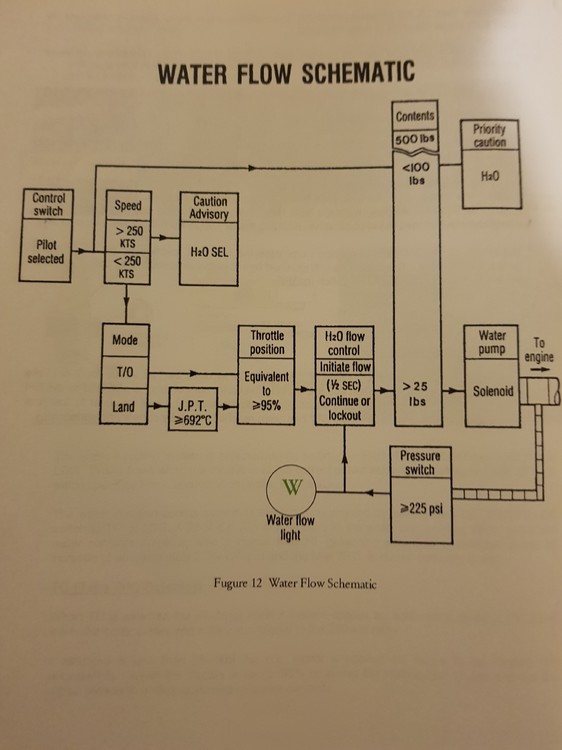-
Posts
230 -
Joined
-
Last visited
Content Type
Profiles
Forums
Events
Everything posted by robmlufc
-

No backup hydraulics when engine goes out in flight?
robmlufc replied to D4n's topic in Resolved Bugs
There is two hydraulic systems on the Harrier, both driven by the engine. You should be able to move the rudder with no hydraulics and blow the undercarriage down if that's any help? ;) -
Correct
-
Are your flaps dropping down too?
-
You can drop the undercarriage (Helium filled blow down bottle) and flap the rudder (manual reversion) around a bit when you run out of engine. The other flying controls are all powered purely from the hydraulic pumps connected to the engine.
-
-
Mvsgas scan says exactly that water flows until airspeed exceeds 250kts.
-
It takes a few readings but he makes a valid point. 5 is where the flaps should be for conventional straight and level flight. Accept it, it's modelled correctly and that's how the jet is. 0 is when you're going mach 0.fast Probably due to stress as much as anything. The GR7/9 has an emergency manual retract which forces the flaps up against their stops, 0. But it's for emergencies, as the name suggests.
-
No, water should always stop flowing above 250kts. You should get a H20 Sel caption above 250kts. The only difference between the two modes is the JPT requirement in Land mode. I've attached the water flow logic.
-
The only difference is that in LDG the water does not start flowing until JPT is above 692Deg C (Max normal lift dry JPT), to conserve water.
-
Haha, I know the feeling!
-
Yeah water flow is constant at about 225psi pressure. WAR, are you ex JFH?
-
They do go to 0, you have to be going pretty quick though. I was about mach 0.95 in a dive and had them go up. I then pulled up hard and the tailplane dropped off. Might worth checking the lookup table RAZBAM uses for the logic.
-
Worth bearing in mind that the nose leg shortens itself on retraction before it moves up into the nose bay, otherwise the wheel smashes into the fuselage. If the nose bay is modelled to the correct size and the nose leg shortening isn't modelled, perhaps RAZBAM have modelled a slightly shorter nose leg or less extension to make it fit?
-
Certainly with the older less powerful engines, water was always required for hovering, even with pylons removed. I can't speak so much for the AV8B but on the Gr7/9 with the latest mk107 engine, the water was only really there as ballast and for use in hot high altitude conditions.
-
Auto flaps move 0 - 25 depending on landing gear and airspeed.
-
They do go to 0, you need to be shifting though. There's no need to worry about them being at 5.
-
Setting flaps to "Cruise" holds the flaps at 5 Deg. This is normal. "Auto" controls the flaps between 0-25 Deg depending on airspeed and landing gear position. "STOL" controls between 0-62 Deg depending on weight on wheels, airspeed, nozzle position You should be in "Auto" for conventional flight.
-
You should get an increase in LP RPM of about 3.7% when you select TO or LDG, even with no water flow. I don't think the pump should fire up until you get to 95% throttle position, which trips a solenoid and allows bleed air to the pump but its been a while and I standby to be corrected.
-

What fighters were the Argentinians using in the Falklands?
robmlufc replied to Neil Gardner's topic in AV-8B N/A
Worth remembering that the carrier Veinticinco de Mayo spent most of the conflict hiding in port, after the General Belgrano was sunk. The conflict may well have been fought differently if that was not the case. -
On the real aircraft you just lift the switch up and it springs back down once you're passed idle. Much like the warthog shut off. The nozzles move even when the engine isn't running, not sure if that has been mentioned. Loving it so far though, brings back memories!
-
Cott mostly for me! Started with the GR9 JUMP program and was there till the end. I miss the Harrier Force days.
-
I guess you were at Cottemore or Wittering Harry?
-
That's the GR9 development airframe, which is why it's loaded with Brimstones. I think only 2 airframes had that capability before the Harrier was binned.
-
RPS is Rudder Pedal Shaker Q Feel is the artificial feedback for the flight controls, it provides the pilot with resistance on the stick and rudder pedals depending on airspeed and altitude. It's a hydraulic system.
-
We used to remove the pylons (wet and dry) when the aircraft was doing a display, it would buy them a few extra seconds of hover time.



